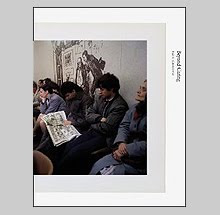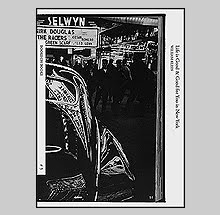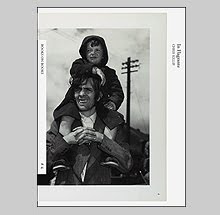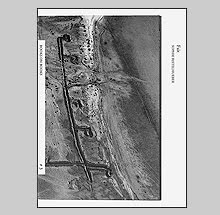Legio Patria Nostra by Giorgia Fiorio
While watching the Claire Denis movie Beau Travail, something about the film started to look very familiar. It is a fictional film that describes the lives of French Foreign Legion soldiers on base in Djibouti Africa. After fifteen minutes into it I recalled why this portrayal seemed so familiar, which led me to pause the DVD and pull a copy of Legio Patria Nostra by Giogia Fiorio off my bookshelf. In 1995, the Italian photographer Giorgia Fiorio photographed Legionnaires stationed in Djibouti, Bosnia, Chad, Guyana, Croatia, Corsica and France.
The familiarity, however, was not because both of these women, Denis and Fiorio, used legionnaires as their subject. I don’t usually watch war films and have them remind me of James Natchwey photos. In this case, it was because both women approached their subjects with similar sensibilities.
Anyone who knows the work of Giogia Fiorio knows that men repeatedly serve as the subjects of her projects. I should really say that masculinity is the subject of her projects as the men she photographs are boxers, bull fighters, firemen, fishermen and soldiers. She is not one to usually focus her lens on everyday schleps going to and from work. She seems very interested in a type of man who in general terms would be considered manly men. Hers are the same types that inspired the Greeks to make sculptures and Leni Riefenstahl to glorify. Claire Denis explores a similar machoism throughout Beau Travail.
What alternately links these two visions is their description of the strangeness of these soldier’s lives. Firstly, as foreign legion soldiers they are naturally ‘foreigners’ wherever they are stationed. Their strangeness is compounded by the fact that their world is so insular being that it is within a military encampment. Women are not a direct part of the world they create. This is a homosocial world that ultimately, in the hands of these two women artists, is described in overt homoerotic terms.
In, Legio Patris Nostra, Fiorio photographs the men as they struggle through survival training and rescue maneuvers that at times seem more like torture than a fitness regiment. Using 6X6 square format camera, her photos alternate between being straight portraits and moving through the obstacles with her subjects. The photos taken on the fly, in my opinion, are her strength.
The book is structured so that when we first meet our group of legionnaires, they are emerging from water training (wet behind the ears). We follow their torturous training and daily routines and end with a few images of them as they awkwardly navigate their way through their adopted landscapes and mix with the locals. These photos are very few in number and thankfully so as Fiorio is as much an apparent spectacle as the white capped legionnaires. The locals stare like deer with Fiorio’s flash in their faces.
Although it may seem cliché, part of the appeal of some of these photos is the sense of how these men rely on one another for survival and the creation of that different and regimented way of living. The military is all about symbols of power and control and here those same symbols are plenty. The bodies of the men are taut and their pent up energy seems barely contained even when the bodies are at rest.
One of the problems with Fiorio’s work for me is that aside from several extremely well made photos that transcend their subjects, much of her other work can feel like a simple editorial story.
The book Legio Patria Nostra was published by Marval in 1996. It is square and 11 X 11 in size. The design is really well done in the way that the images lay out on the page. They appear in many different sizes and the choices of which appear small and which are given more real estate is well conceived. There is a lot of text in French which flows in columns in appropriate places throughout the book. Unfortunately, as I have stated before, I do not speak or read French so I cannot say how interesting or integral the text is in relation to the photos. Purely in a design sense, it has a nice presence.
The printing is well done except in a few circumstances. I think Fiorio shoots with a filter over her lens that darkens the skies in her photos and this sometimes becomes a difficult aspect for the printing to handle. That dark sky along with: the tone of the uniforms, the tan skin of the men, and the drab surroundings, often share so much of the same tonal palette that the printing winds up looking muddled, even though they are not flat in contrast. Over all though, I think it is a well put together book that is more appealing than many of her other titles. Unfortunately, it is out of print and somewhat difficult to find at a decent price.
Book Available Here (Giorgia Fiorio: Men)
DVD Available Here (Beau Travail)












